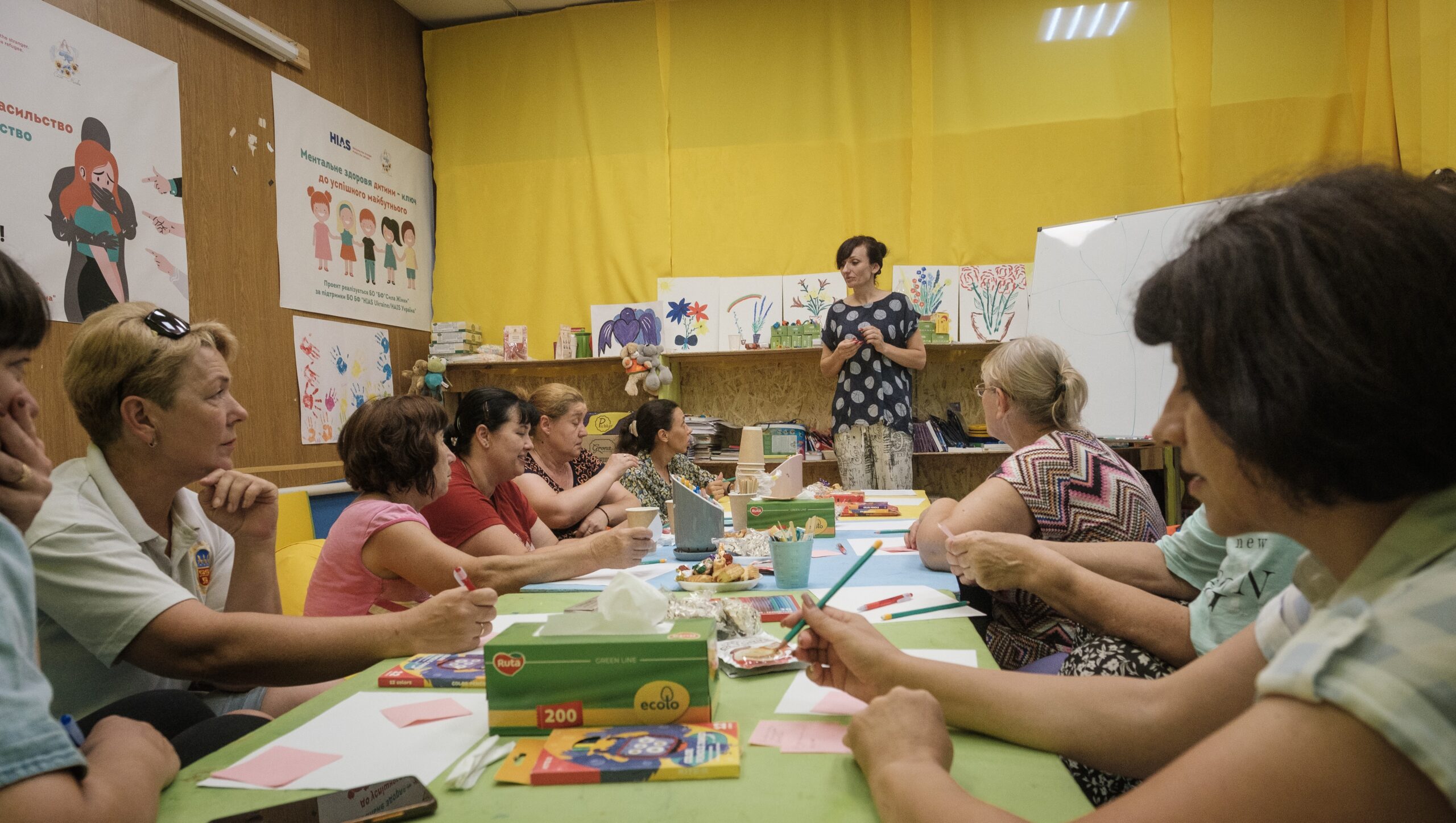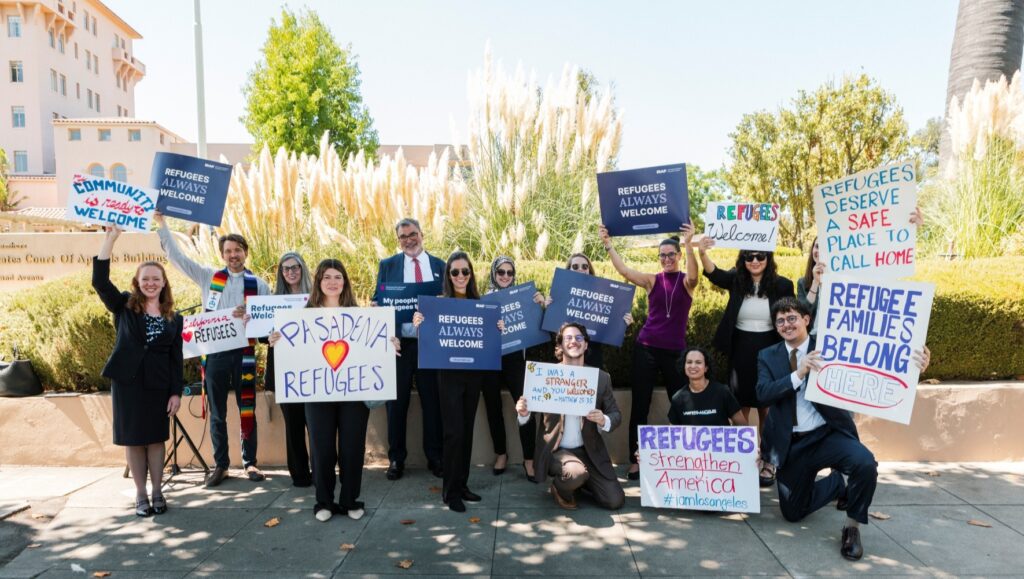
Since 2022, full-scale war in Ukraine has forced 5.6 million Ukrainians to flee to other countries and displaced 3.7 million more people within the country. Nightly drone attacks and quickly shifting frontlines have reduced millions of other Ukrainians to poverty and a tenuous life in makeshift shelters.
Since many Ukrainian men are required to stay in the country for military purposes, most refugees outside of Ukraine are women and children who have faced challenges integrating into their temporary new communities. Many refugees have settled throughout Europe, which at first welcomed Ukrainians, but has increasingly pulled back on aid and legal rights.
Meanwhile, tens of thousands of non-Ukrainians, often referred to as “third-country nationals,” were also displaced by the war. These are refugees, asylum seekers, foreign students, and economic migrants. Third-country nationals have often received far less support than Ukrainians as they fled the war and still struggle for legal status.
HIAS has been active in Ukraine since 2001, supporting the rights and well-being of displaced people. Our work in Ukraine intensified in the wake of full-scale invasion, but in the period since, owing to foreign aid cuts by the U.S. government, we have transitioned ongoing program implementation to partners in-country.
What exactly is the current landscape for refugees and internally displaced people in Ukraine? Read more to find out.
Your support matters
What has been the impact of war in Ukraine on displacement?
Displacement, along with food, healthcare, and other protection gaps have left more than 12.7 million people in need of humanitarian assistance. Fifteen percent of the population in Ukraine is food insecure and needs assistance affording basic goods.
While more than 3 million Ukrainians remain displaced within the country, another 4.5 million people have also returned from abroad. Many houses remain damaged, with over 13% of Ukraine’s housing supply destroyed. Millions of people require shelter as they try to rebuild their lives.
The energy crisis caused by constant drone attacks is disrupting services across the country. One in five households in Ukraine also lack access to clean water. More than two million children need help recovering from the war, after years of lost schooling and psychological and physical stress.
The war has also killed or injured more than 42,000 civilians, including 2,500 children. More than 9 million Ukrainians need healthcare, with many recovering from injuries caused by the war. Millions of people remain traumatized by the constant danger and displacement and require mental health care.
The war in Ukraine has killed or injured more than 42,000 civilians, including 2,500 children.
What rights do Ukrainian refugees have in other countries and where have they sought safety?
Unlike most refugees fleeing to the European Union, Ukrainians fleeing the war were immediately granted temporary legal status, which allowed them to work and access social support. This does not guarantee Ukrainians permanent residency and must be renewed every two years.
Most Ukrainians fled to neighboring European countries, with Germany, Poland, Czechia, Spain, and Italy hosting the largest amounts. Canada, the U.K., and the U.S. also host significant numbers of Ukrainian refugees. 76% of refugees are women and children and face significant risks of violence and sexual exploitation.
Many Ukrainians have successfully integrated into their host communities, finding jobs, renting their own accommodation, and enrolling their children into schools. However, many people are working different jobs than their careers back home, which can undercut their earning potential and stop them from contributing further to the economies of their host countries.

Supporting Domestic Violence Survivors in Ukraine and Moldova
Read MoreWhat rights do non-Ukrainian or “third country national” refugees and asylum seekers have when fleeing the war in Ukraine?
Before the war, Ukraine was for many years both a transit and destination country for people fleeing persecution and violence in other parts of the world. When Russia launched its full-scale invasion in 2022, Ukraine’s asylum seekers and refugees found themselves among the millions displaced or facing wartime threats inside the country.
Approximately 25% of refugees and asylum seekers fled the war, while the majority remained in Ukraine. Many of those who stayed behind are unable to access the asylum system, lack documents, and are unable to access social services or travel freely, even when fleeing frontlines. Meanwhile, asylum seekers and refugees who have fled the country face significant difficulties returning, preventing family reunification.
While Europe has provided an unprecedented level of support and rights to Ukrainian nationals, previously displaced asylum seekers and refugees have faced significant barriers to protection. They often lack legal status and access to housing, healthcare, and other social services.
Other ‘third-country nationals’, including foreign students and economic migrants faced similar barriers to support, impacting their ability to find safety as they fled the war. More than three years into the war, many have returned to their original countries as their statuses have expired or been revoked across Europe.
How has HIAS supported displaced people in Ukraine?
In response to the full-scale invasion of Ukraine in February 2022, we re-opened HIAS Ukraine to respond to the crisis and provide humanitarian assistance.
Throughout its existence, HIAS Ukraine and partner organizations have supported internally displaced people through legal support, economic empowerment, community mental health care, and have worked to end violence against women and girls. We have also focused on training local organizations on the frontlines, building their capacity to provide critical support to Ukrainians fleeing the war. Learn more about HIAS’ work in Ukraine.
The foreign aid cuts by the U.S. government in 2025 have resulted in HIAS pivoting our operations and transitioning much of our work in Ukraine to partners. While we are dismayed by these necessary changes, we remain grateful to maintain a connection to this work in Ukraine and to continue our operations elsewhere in the world.


